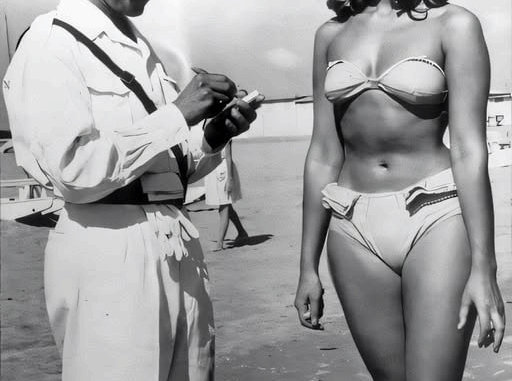
In 1957, a woman enjoying a day at the beach was stopped not for theft, violence, or any criminal act, but for her choice of clothing. She was issued a police fine simply because she wore a bikini—a garment that, at the time, was still seen as dangerously provocative.

The bikini had been introduced to the world in 1946 by French designer Louis Réard, yet more than a decade later it was still banned or frowned upon in many places. Italy, Spain, and certain regions of the United States considered it indecent exposure. Even in France, where it originated, the swimsuit often drew controversy. To the conservative eyes of the 1950s, the bikini was not just fabric—it was rebellion stitched into two small pieces.
For the woman fined in 1957, her experience symbolized a clash between tradition and change. To wear a bikini was to step into uncharted territory: admired by some as bold and liberating, condemned by others as vulgar and unlawful. That one police ticket turned her into an unlikely witness to how quickly fashion could ignite public debate.

This episode highlights the fragile balance of social norms in the post-war era. Women were beginning to redefine their independence and identity, and clothing was one of the most visible battlegrounds. The bikini, which today represents freedom, summer, and body confidence, was once a lightning rod of moral panic.
Looking back, the fine may seem absurd—almost comical. But in 1957, it reflected a world still hesitant to accept female autonomy in style and self-expression. What was once seen as scandal has since become ordinary, reminding us that yesterday’s “fashion crime” can evolve into tomorrow’s cultural icon.
Để lại một phản hồi